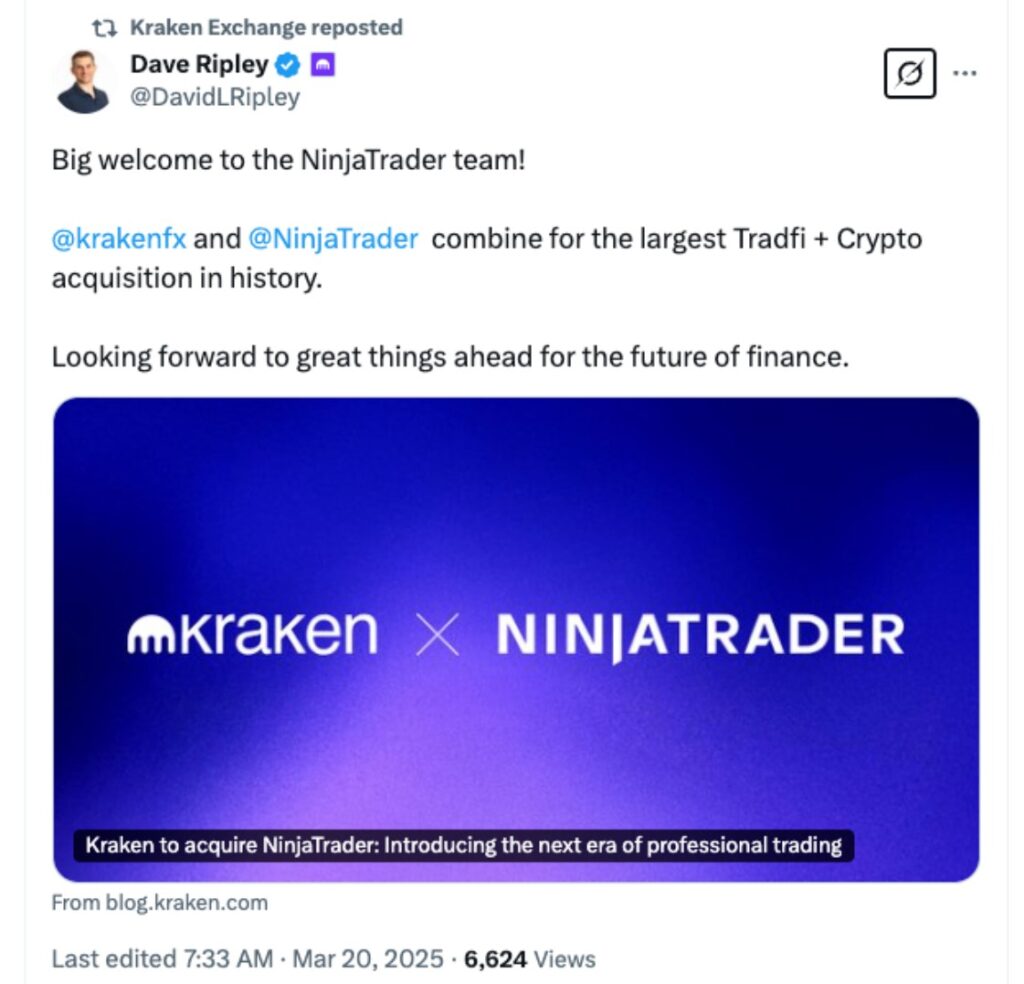The landscape of cryptocurrency trading in the United States is undergoing a significant transformation as exchanges pivot towards the high-stakes world of crypto derivatives. With escalating trade tensions and looming tariffs introduced by former President Donald Trump, the demand for these financial instruments has surged dramatically. Major platforms such as Coinbase, Robinhood, Kraken, and the Chicago Mercantile Exchange (CME) Group are responding to this market turbulence by launching innovative derivatives products and pursuing ambitious expansion strategies.
Since late 2024, activity in crypto derivatives has skyrocketed, fueled by market volatility and heightened interest from both institutional and retail traders. This uptick was particularly pronounced after Trump announced sweeping tariff plans in April, causing financial markets to react sharply. David Siemer, CEO of Wave Digital Assets, noted that these conditions have driven traders to leverage crypto derivatives as a means to better navigate the prevailing macroeconomic uncertainties.
“Institutional and sophisticated retail traders are increasingly turning to crypto derivatives platforms to navigate macroeconomic risks and uncertainty brought on by escalated tariff policies and global trade tensions,”
As exchanges race to capture a larger share of this burgeoning market, the trading activity has reached unprecedented levels. In fact, Coinbase reported a staggering increase of over 10,000% year-on-year in derivatives trading activity as of December. Similarly, CME Group identified crypto derivatives as one of its fastest-growing segments during recent earnings announcements.
The rapid escalation in trading volumes has also intensified competition among exchanges, with Coinbase introducing a range of new futures products and Robinhood marking its entry into the derivatives space with Bitcoin futures earlier this year. As the war for trading dominance heats up, notable acquisitions are on the table, such as Coinbase’s potential multibillion-dollar deal to acquire the crypto derivatives exchange Deribit and Kraken’s planned $1.5 billion purchase of NinjaTrader.
“The recent wave of tariffs has transformed crypto derivatives exchanges into critical market infrastructure,”
The ability of derivatives platforms to thrive during traditional market disruptions signifies their evolving role as not just speculative venues but also essential hedging tools amid a fragmented global trading environment. As they evolve, US crypto exchanges are not just witnessing record-breaking activity; they are reshaping the very infrastructure of the financial landscape in response to global economic pressures.
US Exchanges Shift Focus to Cryptocurrency Derivatives Amid Trade War
The increasing volatility in financial markets, driven by US President Donald Trump’s trade policies, has led to a significant rise in cryptocurrency derivatives trading. Here are the key points regarding how these developments may affect readers:
- Surge in Trading Activity:
- Post Trump’s tariff announcements, net open interest in Bitcoin futures surged by approximately 30% in April 2024.
- Coinbase reported over a 10,000% increase in trading activity on its derivatives exchange year-over-year in December 2024.
- Institutional and Retail Interest:
- Both institutional and sophisticated retail traders are increasingly using crypto derivatives to manage risks associated with economic uncertainties.
- This trend may encourage more personal investors to explore crypto derivatives as a means for potential profit or risk management.
- Emergence of New Products:
- Exchanges like Coinbase, Robinhood, and CME Group have rapidly expanded their offerings including futures contracts on altcoins like Solana and XRP.
- The availability of more diverse products may attract mainstream investors, potentially increasing individual engagement in cryptocurrency markets.
- Increased Competition:
- The heightened demand has led to fierce competition among exchanges, pushing them to innovate and consolidate.
- Mergers and acquisitions such as Kraken’s purchase of NinjaTrader reflect a growing trend that could shape the future of trading platforms.
- Regulatory Clarity:
- The ongoing development of crypto derivatives could pave the way for clearer regulatory frameworks, which may enhance market stability and investor confidence.
- Impact of Tariff Policies:
- Trump’s tariff strategies have paradoxically fueled the growth of crypto derivatives, positioning them as viable hedging tools in uncertain markets.
- This may encourage readers to consider cryptocurrency derivatives as part of their investment strategy to hedge against economic fluctuations.
Crypto Derivatives: A Spotlight on Market Dynamics Amidst Trade Tensions
The cryptocurrency landscape is undergoing a seismic shift as U.S. exchanges enter a heated competition in the crypto derivatives sector, catalyzed by market unrest stemming from geopolitical issues, particularly the economic policies of former President Donald Trump. Major players like Coinbase, Robinhood, Kraken, and the CME Group are not only expanding their product offerings but are also actively pursuing substantial acquisitions, aiming to capture a piece of this rapidly evolving market.
Competitive Advantages
One of the significant advantages for these exchanges is their ability to pivot rapidly in response to economic stimuli. The recent turmoil in traditional markets caused by tariff announcements has sparked a surge in crypto derivatives trading as investors seek alternative avenues for hedging and speculative opportunities. Companies like CME Group have reported that crypto derivatives have become one of their fastest-growing segments, indicating a robust demand that exchanges are keen to fulfill. Furthermore, with new products such as altcoin futures, exchanges like Coinbase are diversifying their offerings to attract a broader range of traders, capitalizing on the growing interest in digital assets beyond Bitcoin.
Competitive Disadvantages
However, the race for control also presents challenges. The increased competition means that exchanges must continuously innovate, leading to potentially high operational costs. With the market saturation and the influx of new products, there’s a risk that some platforms may introduce derivatives that lack adequate risk assessment or consumer understanding, potentially resulting in losses for less sophisticated retail investors. Additionally, regulatory scrutiny around these new products could stymie growth or lead to compliance challenges. As exchanges race to establish themselves, any missteps could also tarnish their reputations.
Beneficiaries and Challenges
This dynamic environment in the crypto derivatives market has mixed implications for various stakeholders. Institutional traders and well-informed retail investors stand to gain significantly by leveraging sophisticated instruments to navigate the uncertainties in macroeconomic factors introduced by trade wars. However, these developments could also create problems for less experienced investors who might be drawn into complex futures contracts without fully understanding the risks, particularly in a landscape marked by high volatility and rapid changes. Moreover, traditional financial institutions may find themselves increasingly sidelined, as crypto derivatives platforms emerge as essential player hubs in financial markets, reshaping how trading is conducted in challenging economic times.

















